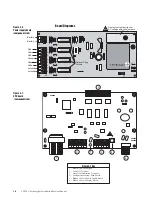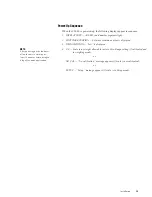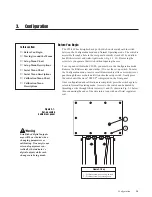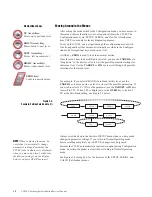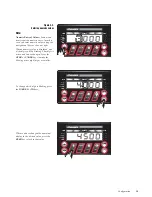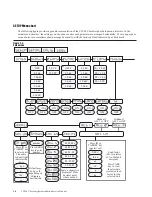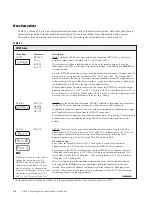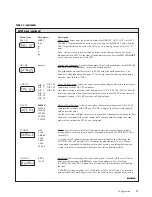
Configuration
3-13
Table 3-2. (continued)
SERIAL menu
Menu Item…
Parameter…
PFUNCT
TOD
√
LOD
CONT
AP1
AP2
AP3
AP4
Description…
• TOD
Transmit on Demand. Transmits weigh data when PRINT key is pressed. Printout
only occurs if scale is not in motion or out of range (Overrange or Underrange
condition). If either of these conditions is not met, the print request is ignored.
• LOD:
Configures the CW-80 to remember (LATCH) to Transmit on Demand any weight
data (once the PRINT key is pressed and the two criteria are met). The scale must not
be in motion (at standstill) and must be within the scale’s weighing range (NOT Over/
Under range). If either of these two criteria is not met, then the PRINT request is
stored until the criteria is met; the printout will occur at that time.
• CONT: Configures the CW-80 to automatically transmit current weight data with each A/D
update, (25 Hz) at 9600 baud rate or higher. The transmission rate is lower for lower
baud rates. You specify the printing from the PRTOUT parameter. For the
PRTOUT=CCC, the format is slightly modified by adding motion status when
PMODE=CONT versus PMODE=TOD, LOD, etc.
• AP1:
Configures the CW-80 to perform automatic transmission of serial data each time the
scale settles out of motion at a value that is within the scale’s weighing range. This
transmission happens only one time per weighment. When the scale reading goes into
motion again, data output is again enabled and transmission occurs when the scale
comes to a standstill again.
• AP2:
Configures the CW-80 to perform automatic transmission of serial data each time the
scale settles out of motion on its transition from Start Up Zero. When an object is
placed on the scale platform and the weight display stabilizes, an Auto Print occurs.
The data output is then disabled until the object is removed from the scale platform,
the scale returns to Start Up Zero, and the weight display settles after another object is
placed on the scale platform (transmission occurs upon settling of weight transactions
in the direction away from Start Up Zero). This differs from AP1 in that while in AP1
mode, the scale did not have to return to Start Up Zero in order to enable data output
(it simply had to go into motion and stabilize again).
• AP3:
Similar to AP2, except that the data enable Zero point is the current system Acquired
Zero rather than the Start Up Zero.
• AP4
Configures the CW-80 to perform automatic transmission of serial data of the last
stable weight reading before the scale starts back down to Acquired Zero. Once an
object is placed on the scale platform, and the weight display stabilizes, the CW-80
begins recording stable readings until the object is removed from the scale platform.
The last stable weight reading is the desired transaction weight, (an Auto Print will
occur, reflecting the last stable weight reading). The data output is then disabled until
the weight reading drops back to Acquired Zero and returns to a nonzero stable weight
reading. Note that this differs from AP1 through AP3 in that AP4 records the last
nonzero stable reading rather than the first nonzero stable reading.
(continued)

